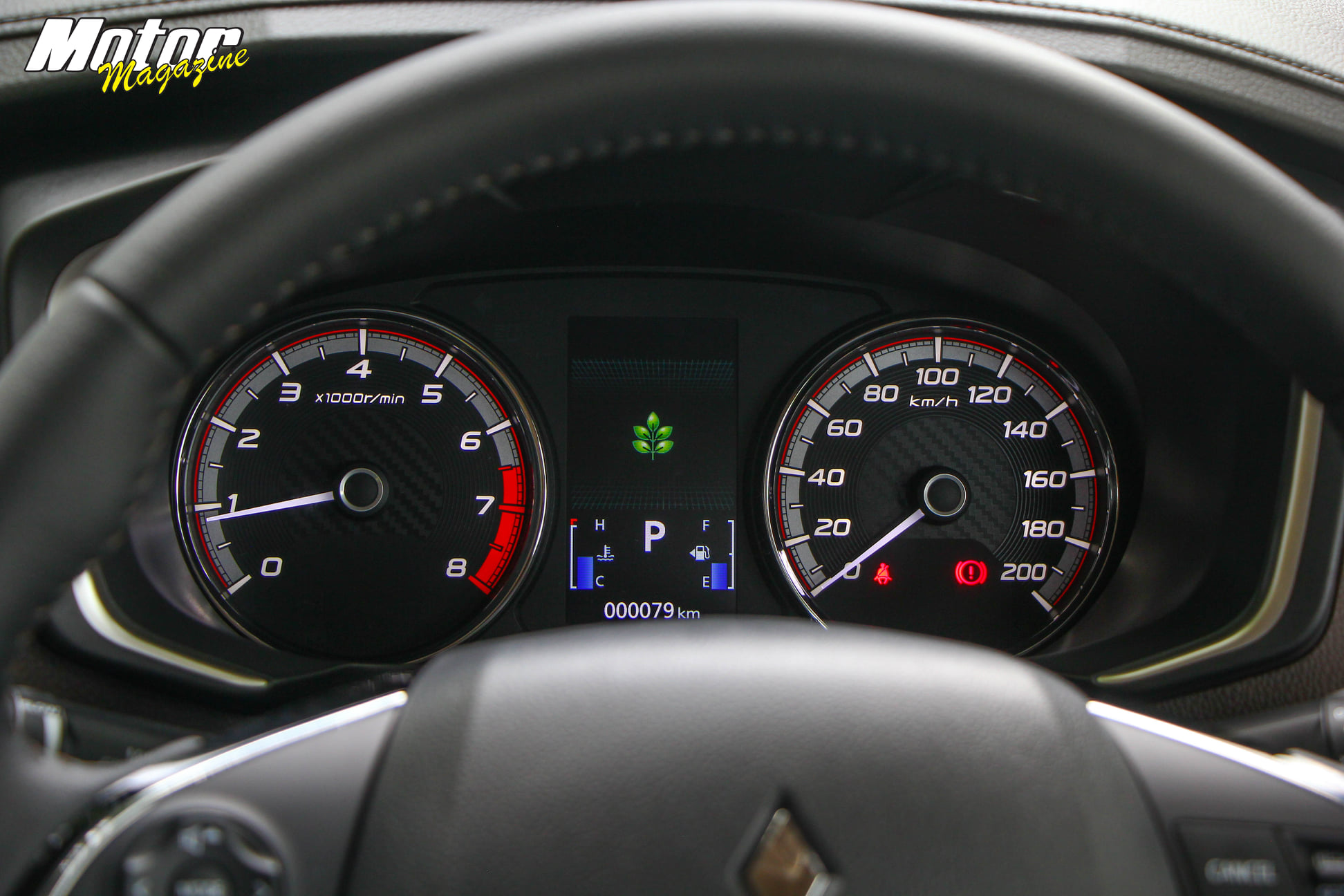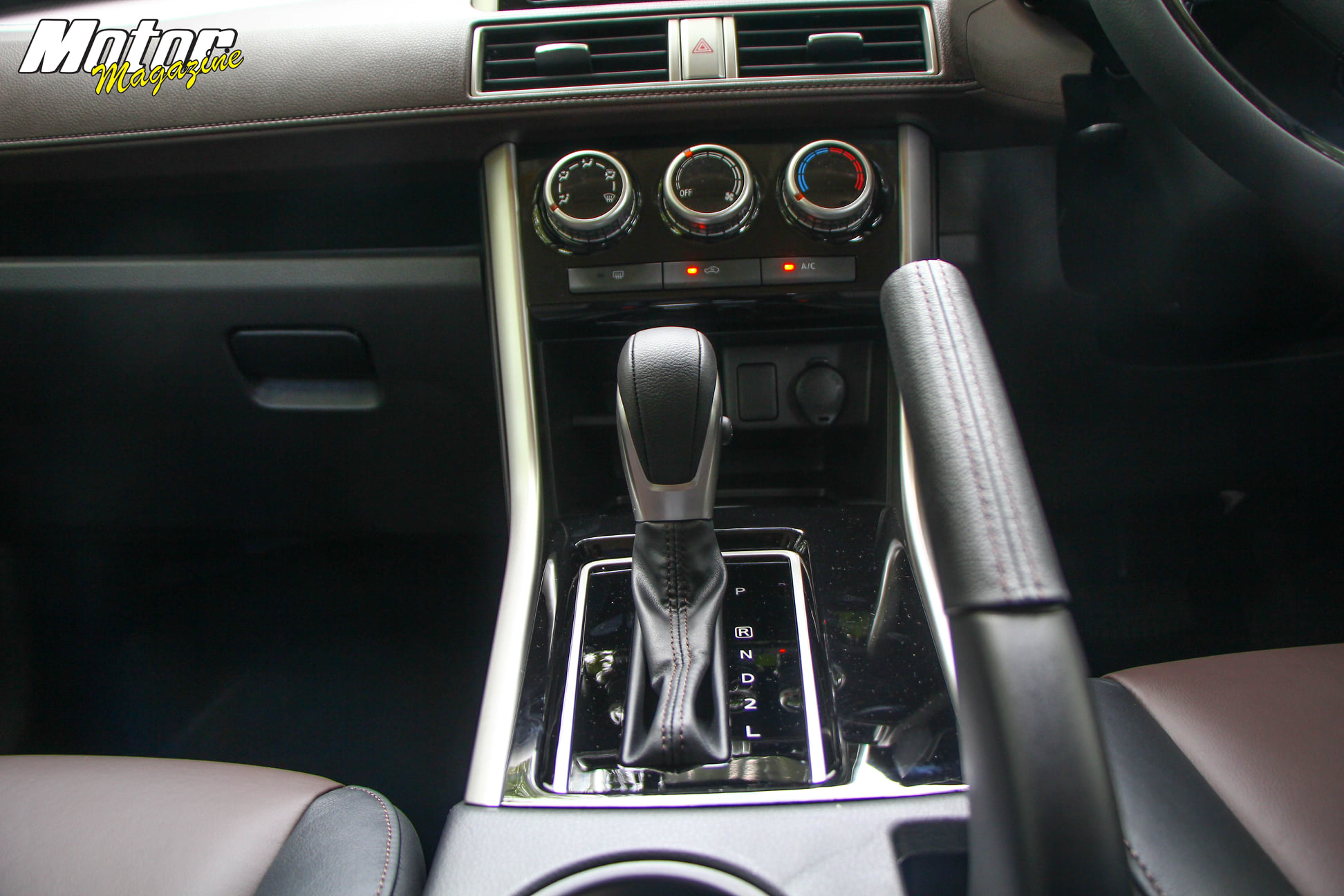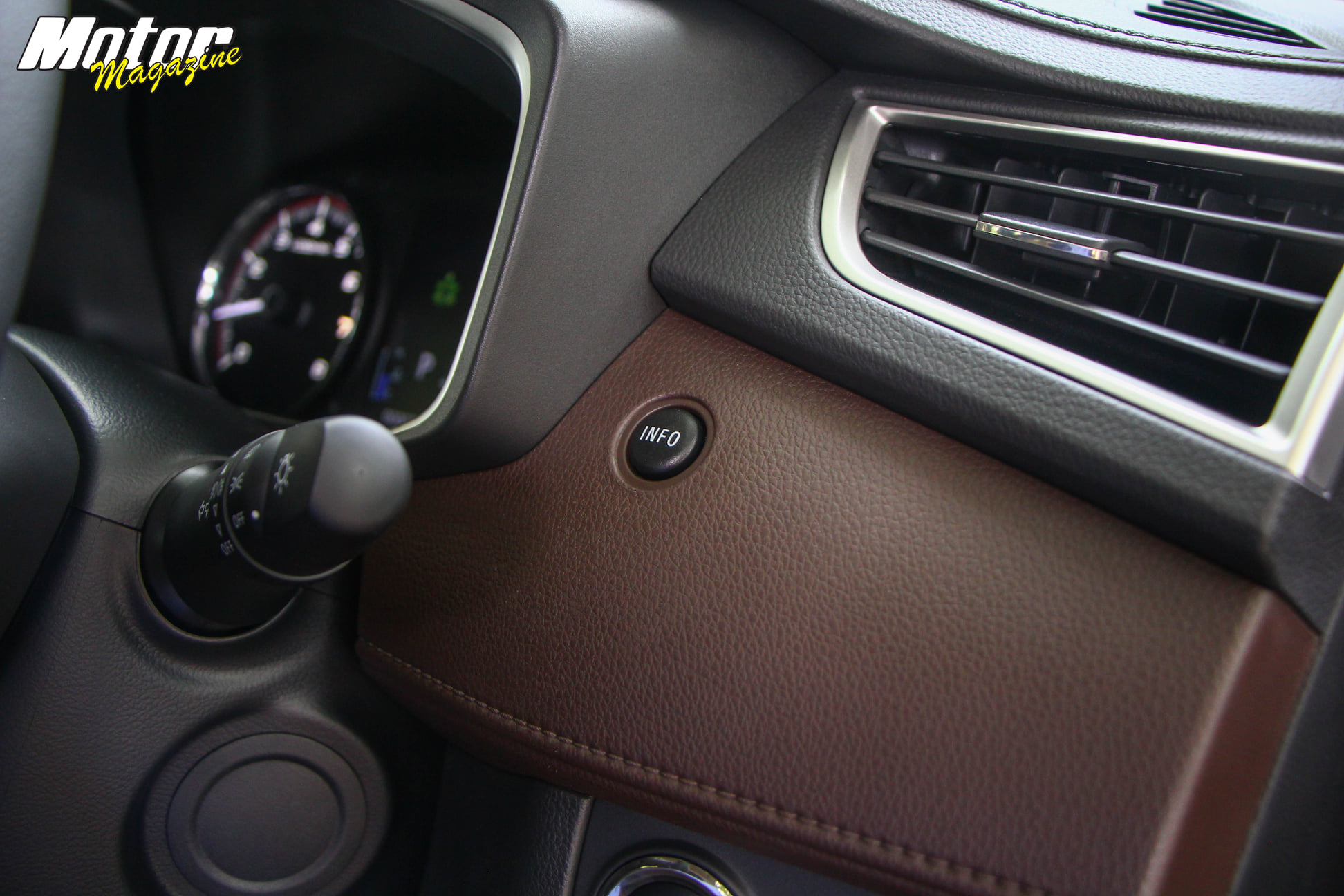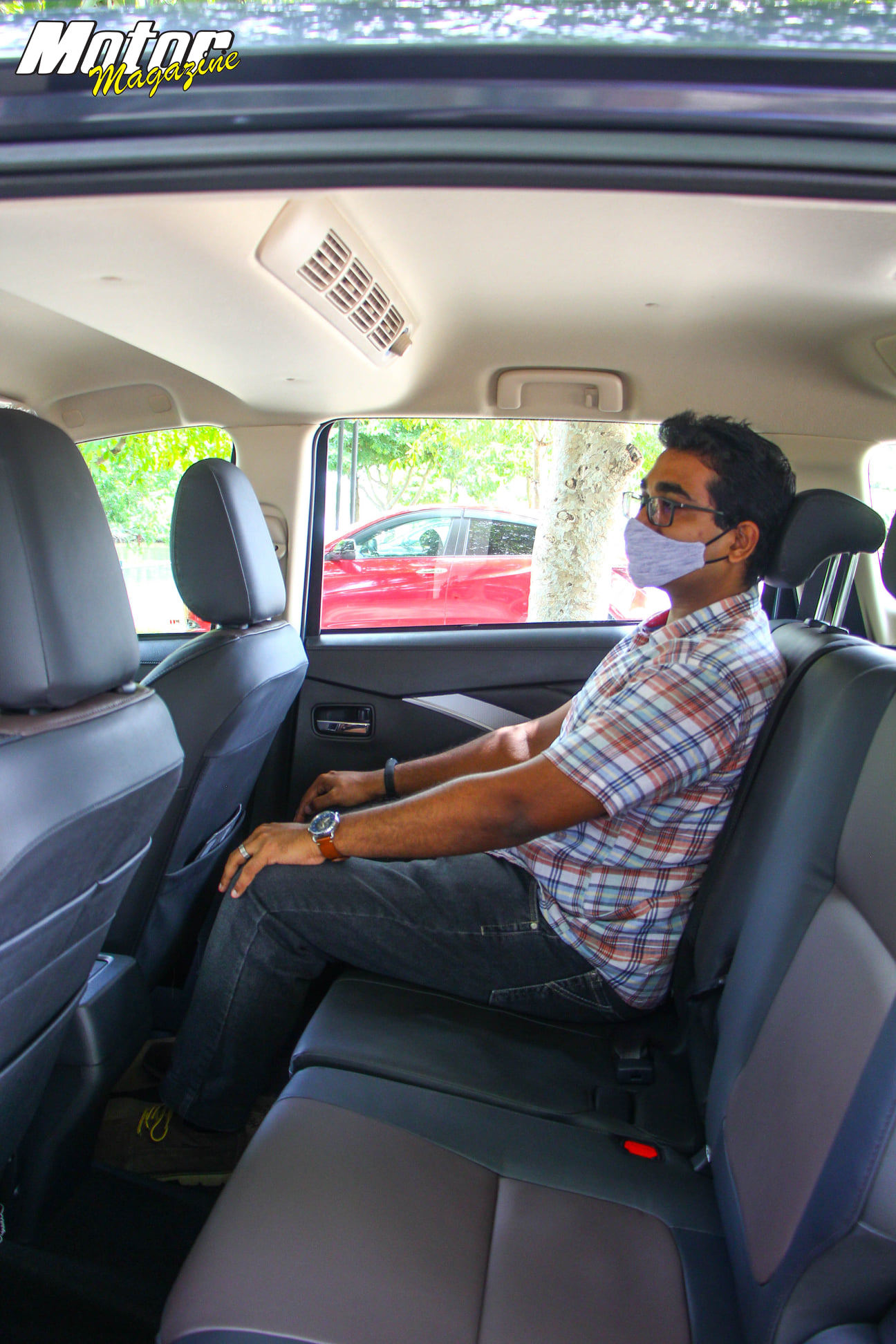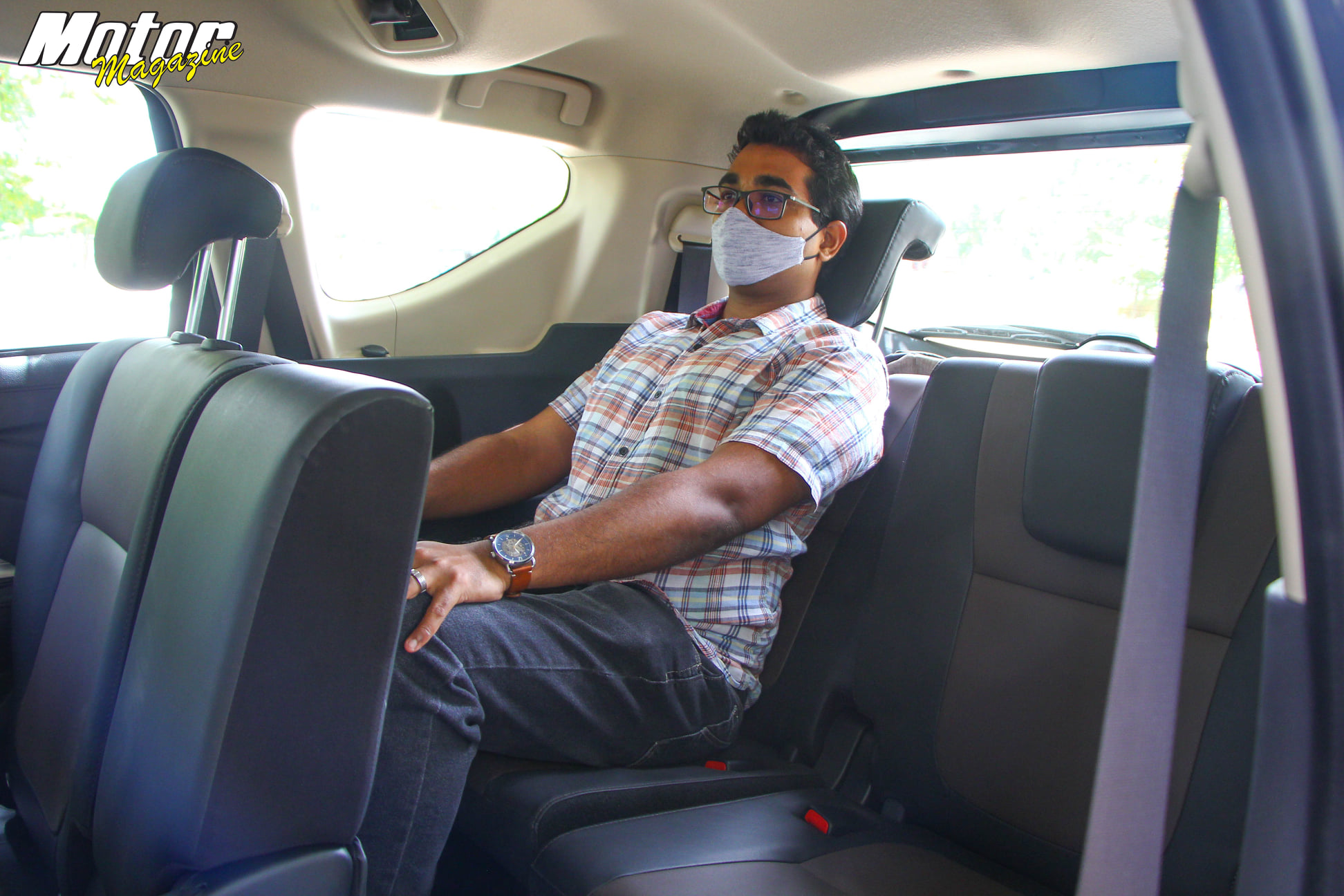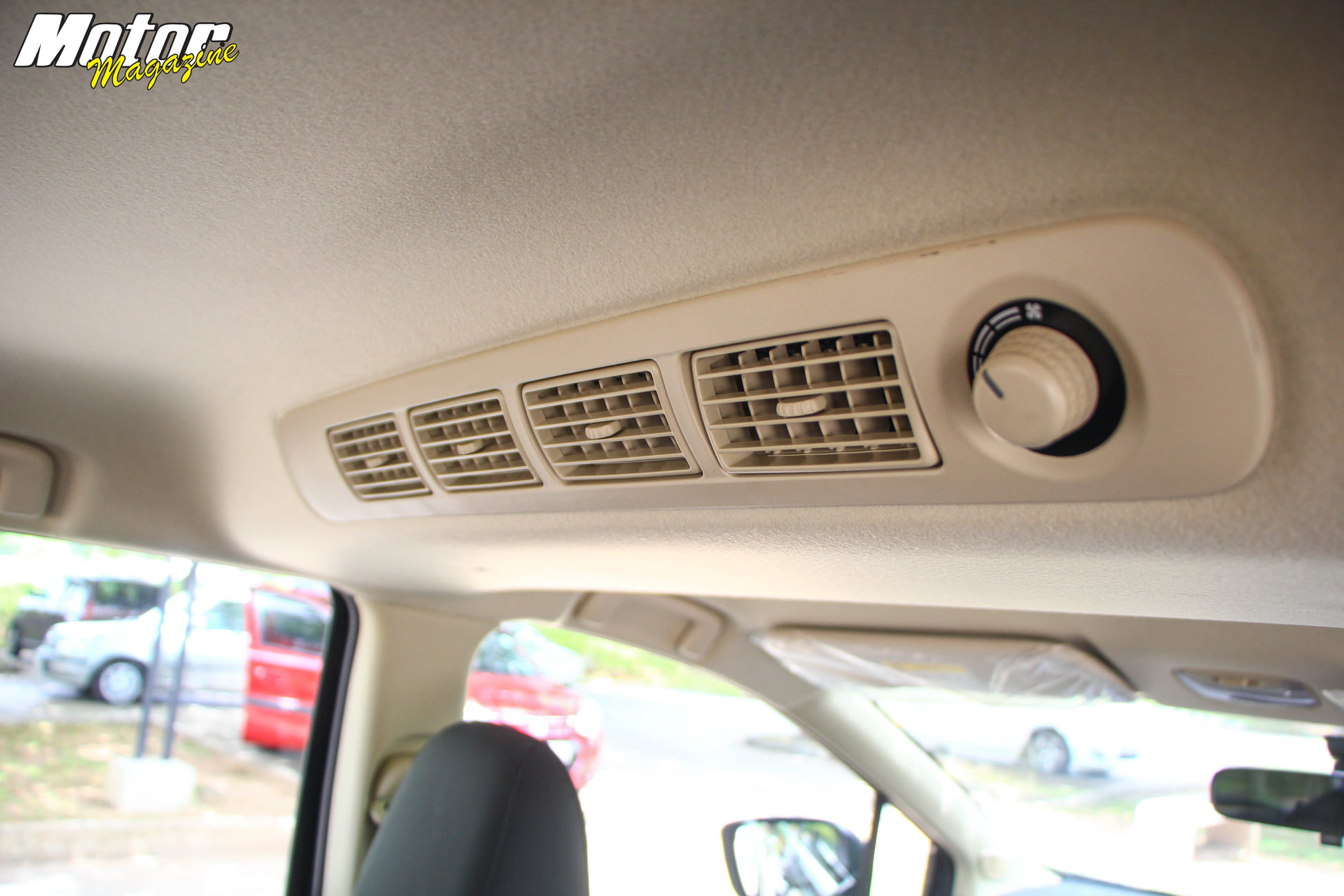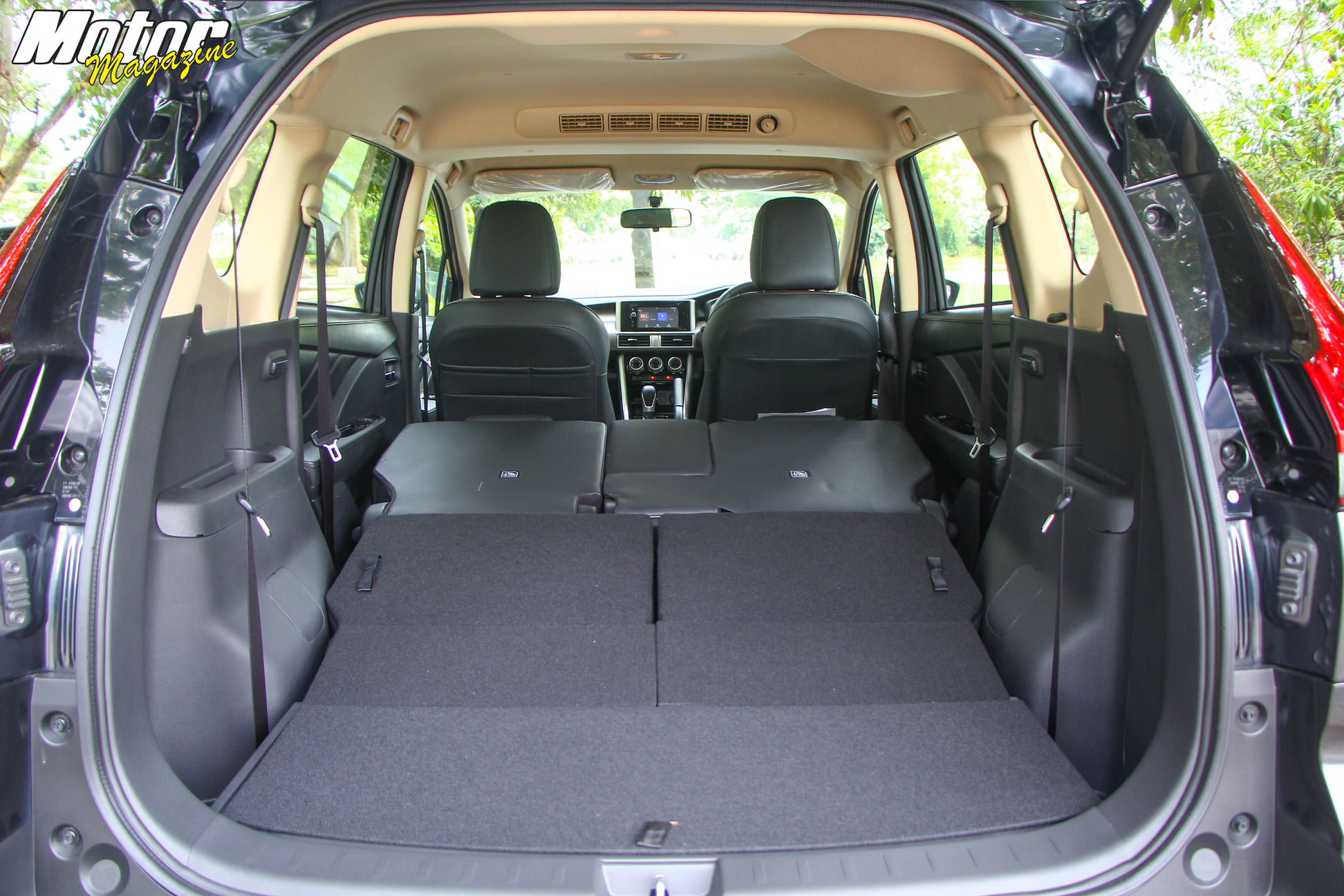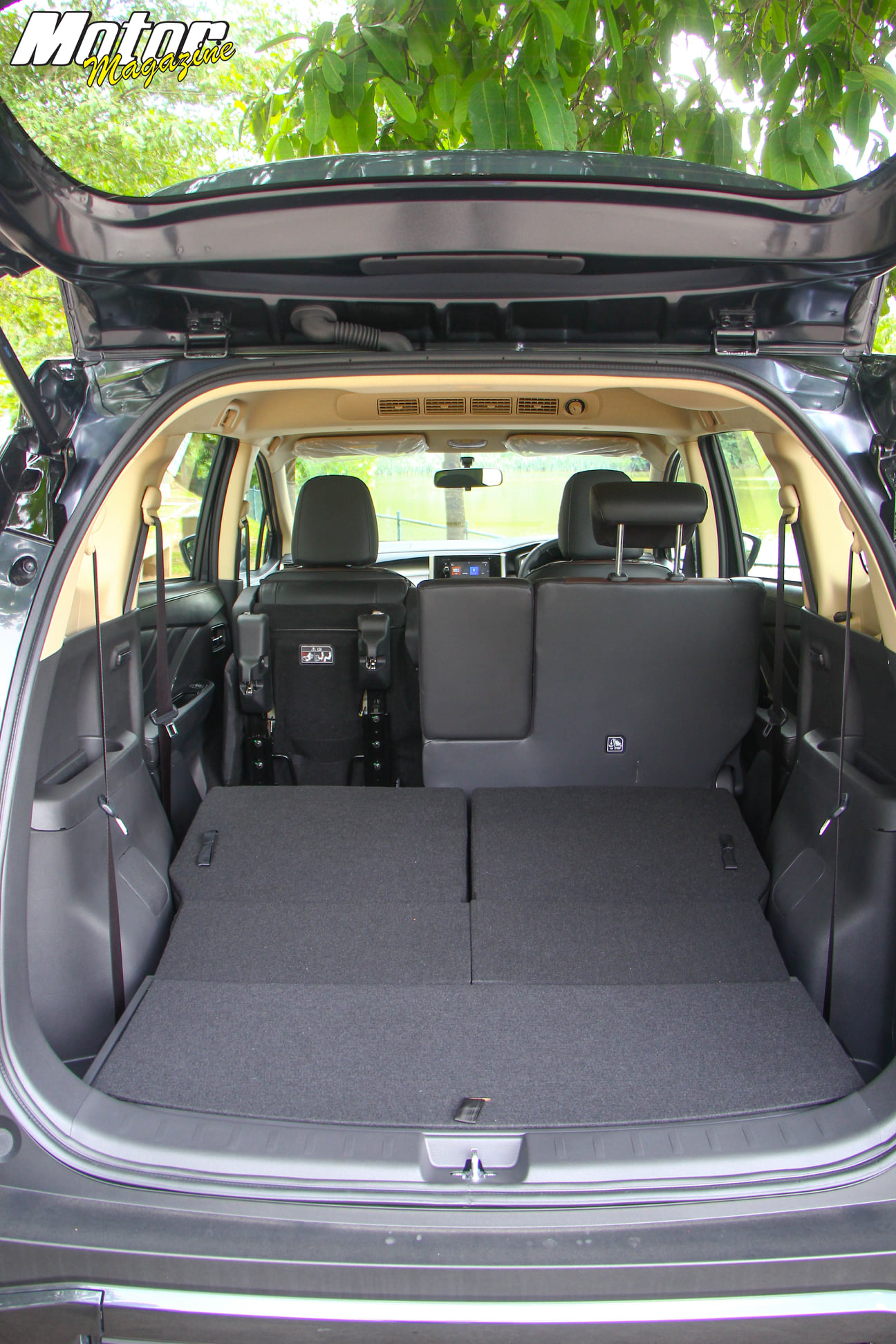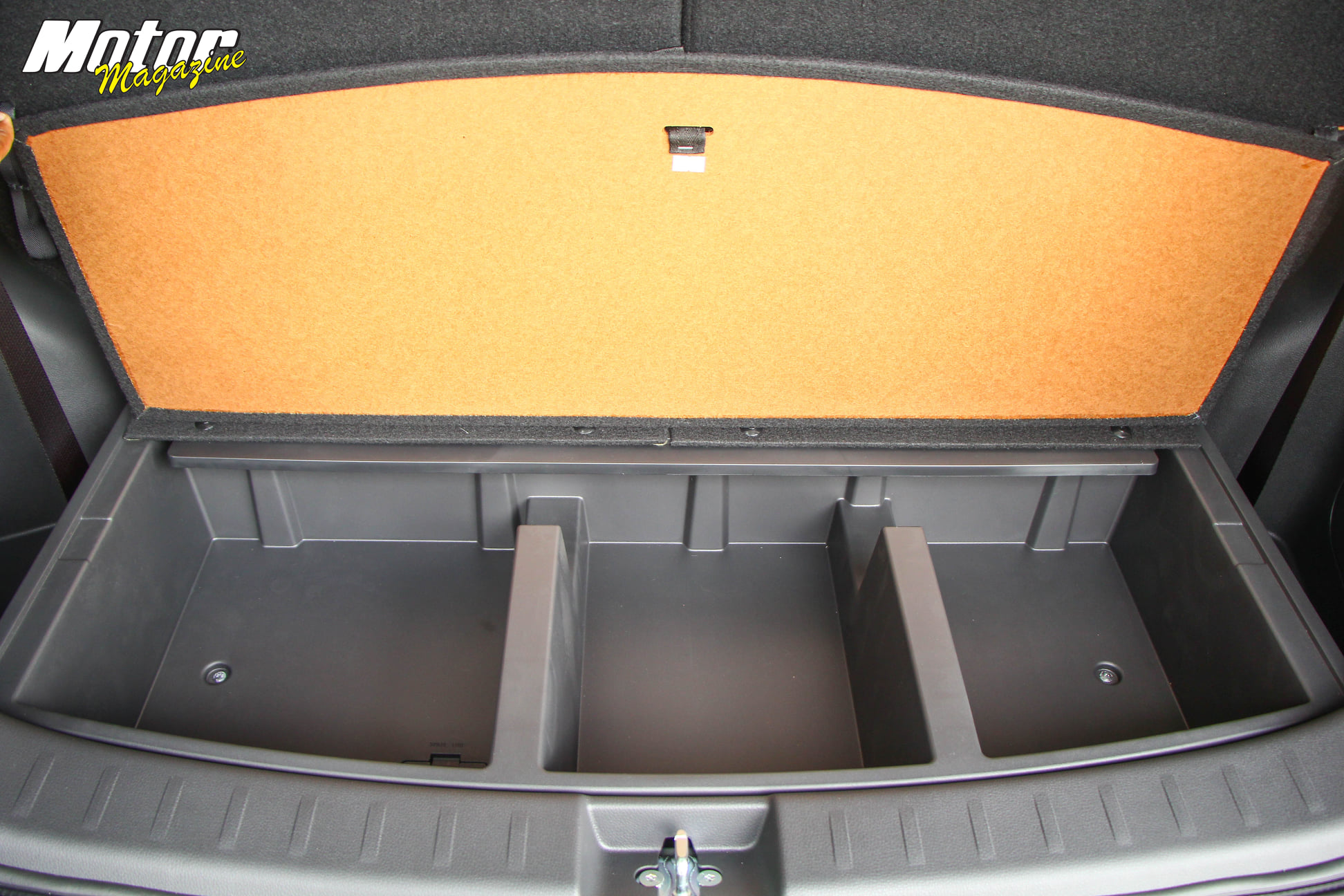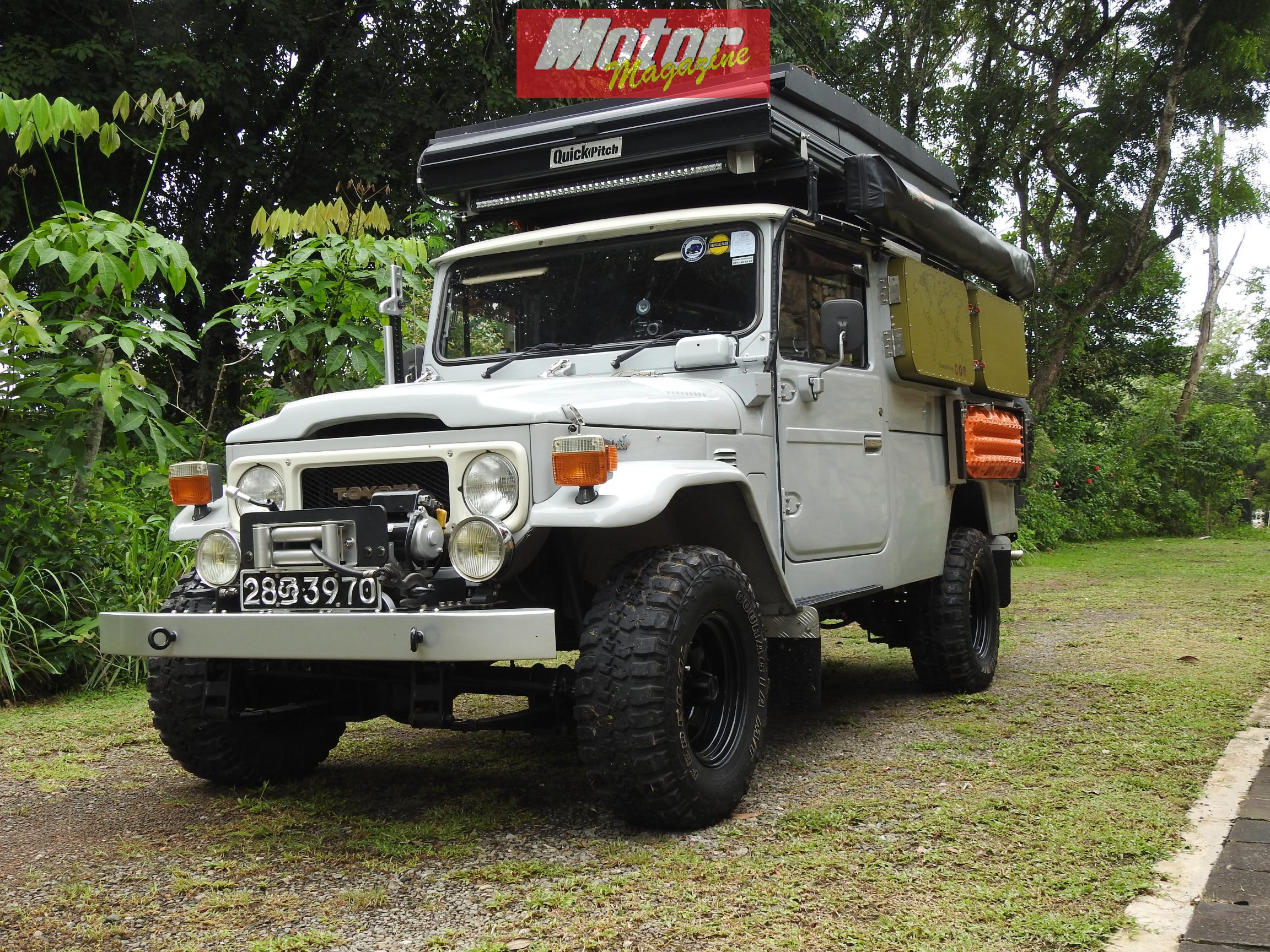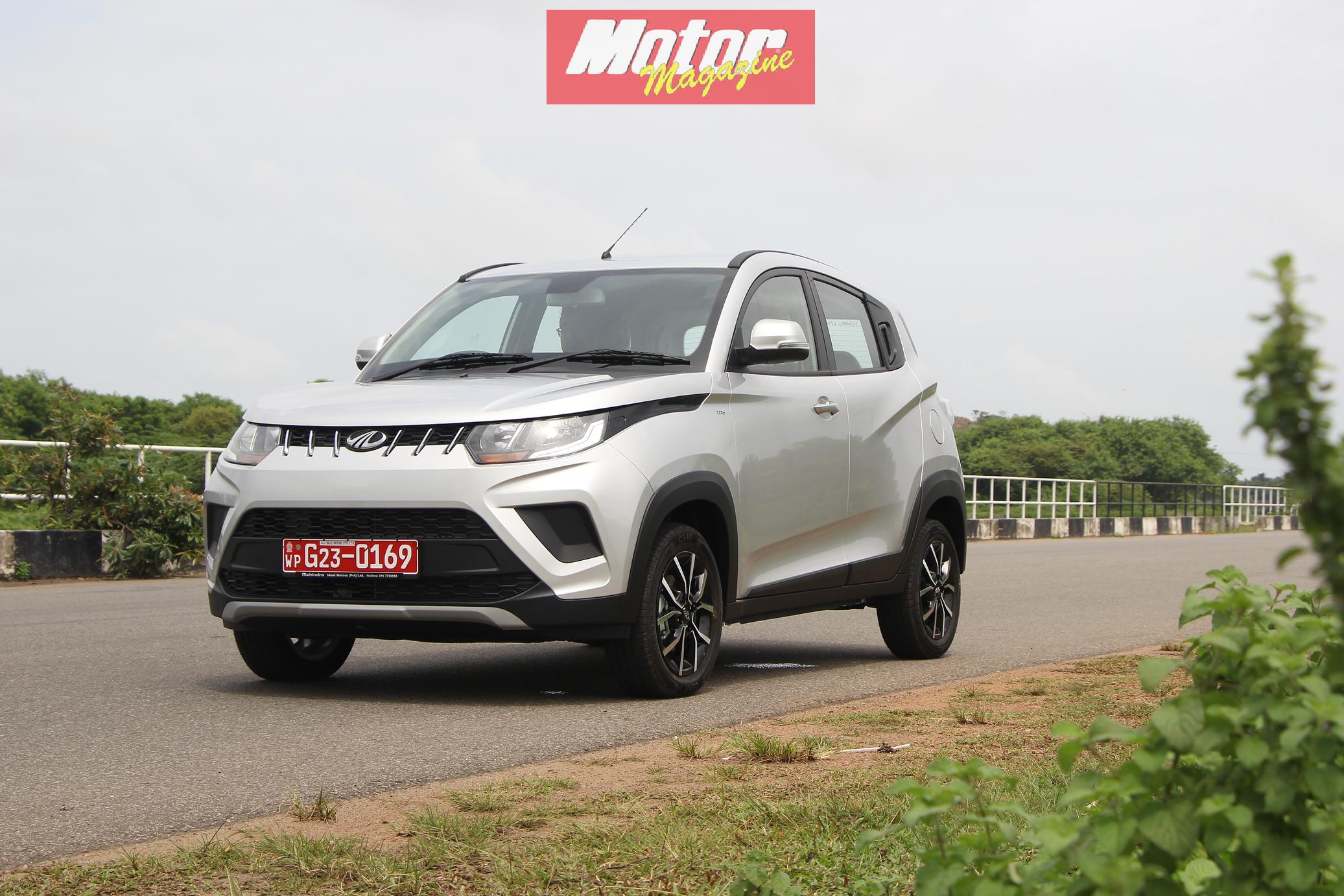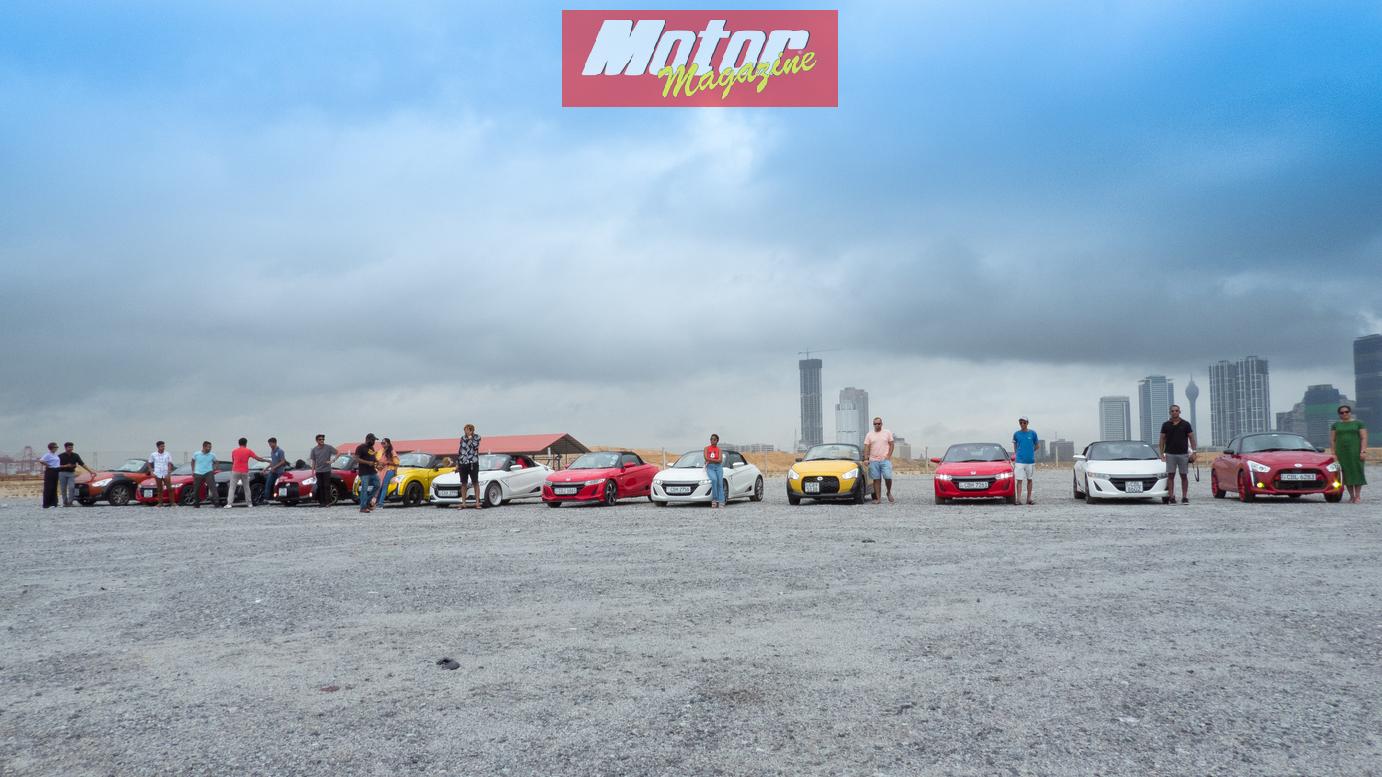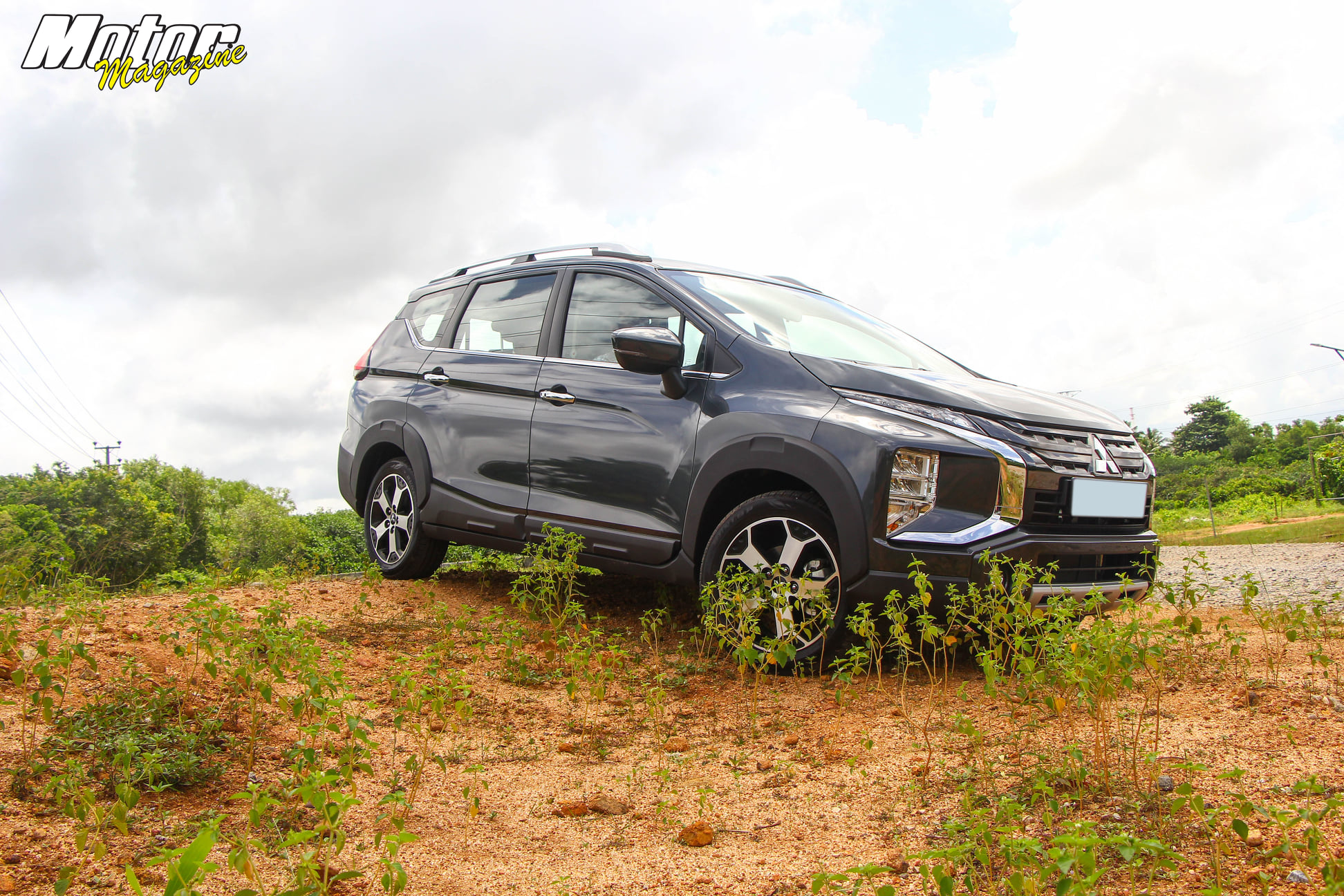
(JULY 2020) What comes to mind when you think of Mitsubishi? Their fearsome World War II aircraft the A6M-Zero? The go-anywhere Pajero (sorry, Montero, as Pajero translates to a derogatory term in some Spanish-speaking countries)? The Lancer Evolution that remains the mainstay of the SL-GT racing class to this day? Sadly, all these are no more. Mitsubishi Heavy Industries still do make aircraft (as well as a slew of other areas including consumer electronics, defense contracts, automated people movers for airports, etc…) but the other two have died. The Lancer and the Montero are no more in production. In their place, Mitsubishi have introduced a slew of new models such as the Eclipse Cross, Xpander, Attrage, eK and this, the Xpander Cross which is the ‘crossover’ variant of the Xpander MPV.
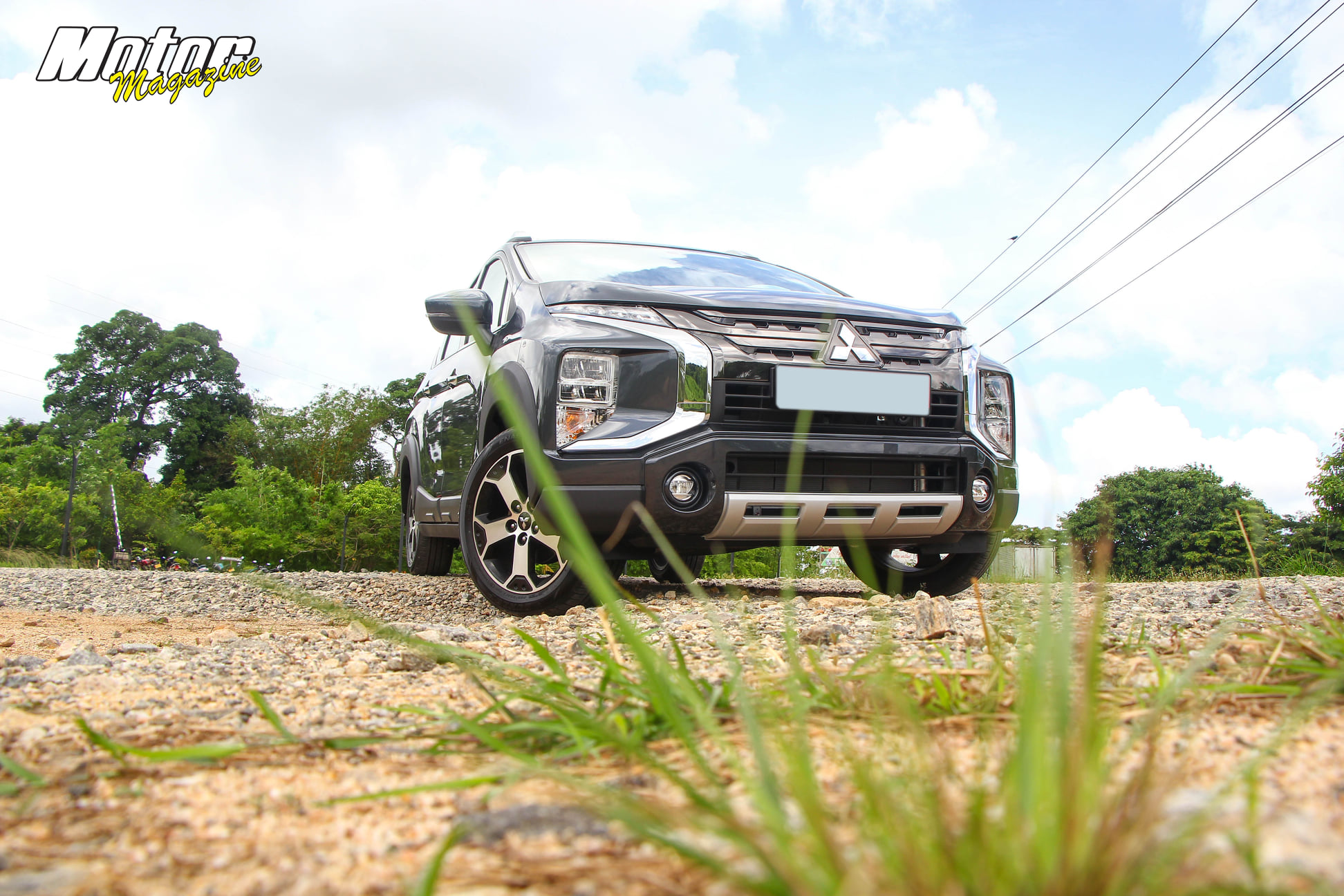
The Xpander is the direct competitor to the Toyota Rush in our market – both offer the same value proposition of a 1.5L engine and automatic transmission in an MPV body that can seat seven adults. The ‘Cross’ takes things a notch further with its higher ground clearance and plastic-cladded lower parts, being the ‘rough and tumble’ variant for the segment. United Motors Lanka PLC, the long-time agents for Mitsubishi vehicles in Sri Lanka sent us an example to test out, so sit back with your digital device of choice, grab a cuppa and read on! Digital is the way forwards, after all!
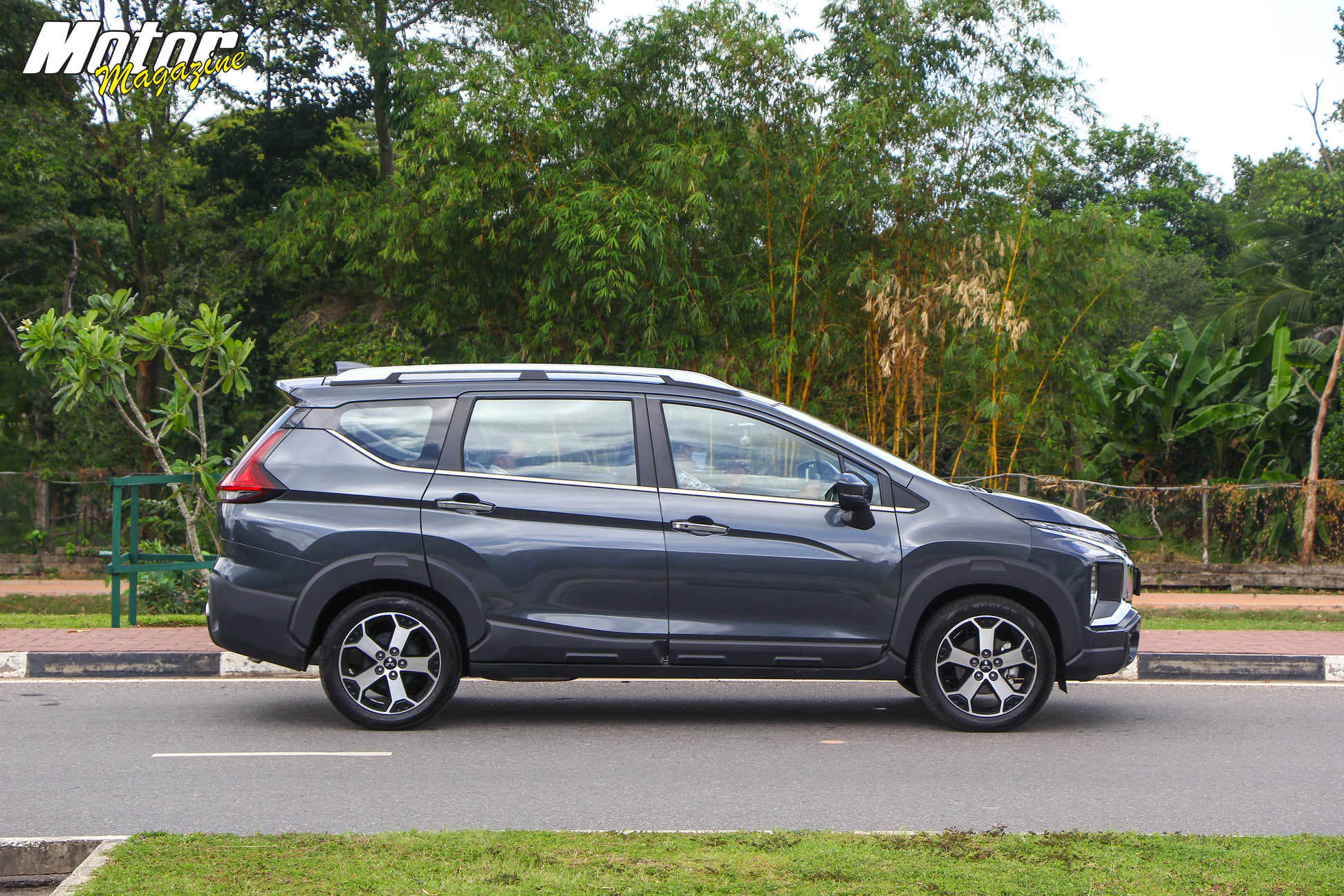
Exterior
Our Graphite Grey Metallic
Xpander looks impressive at first glance. Mitsubishi’s design game took a dip
some years ago, but they recovered well with the Eclipse Cross. That recovery
continues across their product portfolio – look at the 2020 model of their eK
kei car and tell me that it doesn’t look distinctive! The Xpander Cross
continues that theme with high-set DRLs and the actual headlamps looking like
they should be the foglamps, and the actual foglamps (or driving lamps to use
correct terminology) sitting below in the bumper. The side profile is equally
distinctive and the Cross features plastic cladding around the entire lower
body area and wheel arch profiles, further highlighting its purpose in leading
an ‘active’ lifestyle.
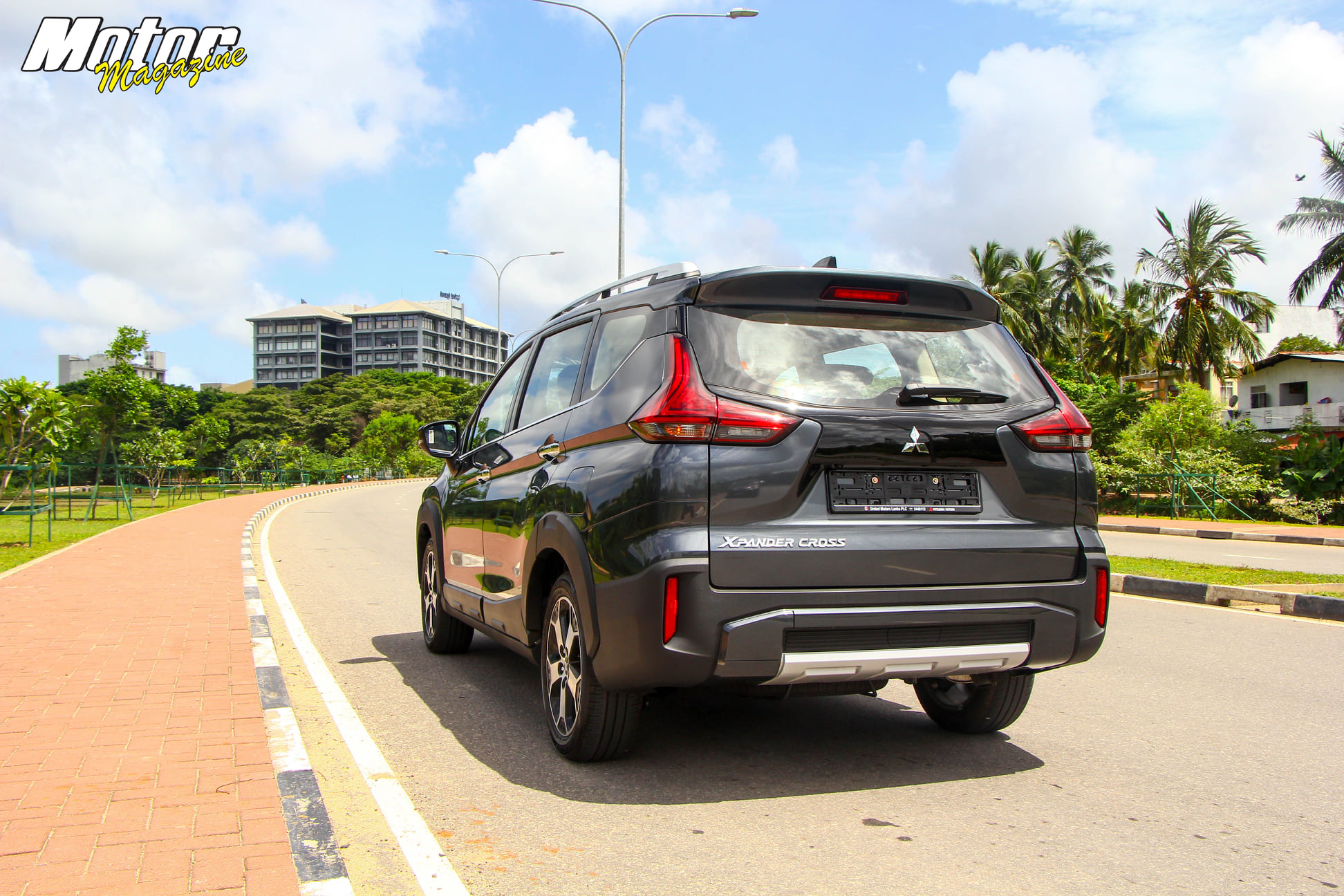
The design language continues to the rear where once again there is continuity with other Mitsubishi models such as the Montero Sport and the Eclipse Cross. From the side profile, there’s no disguising the ‘tall-boy’ look that comes with MPVs, particularly jacked-up ones like this but Mitsubishi have given it a fair crack. My only gripe is that the wheels sit a little too inside the bodywork, particularly the rears, giving it a slightly ‘under-wheeled’ and ‘castored’ look. The wheels are 205/55R17 items with Dunlop rubber and slightly pushing them outwards would improve the look.
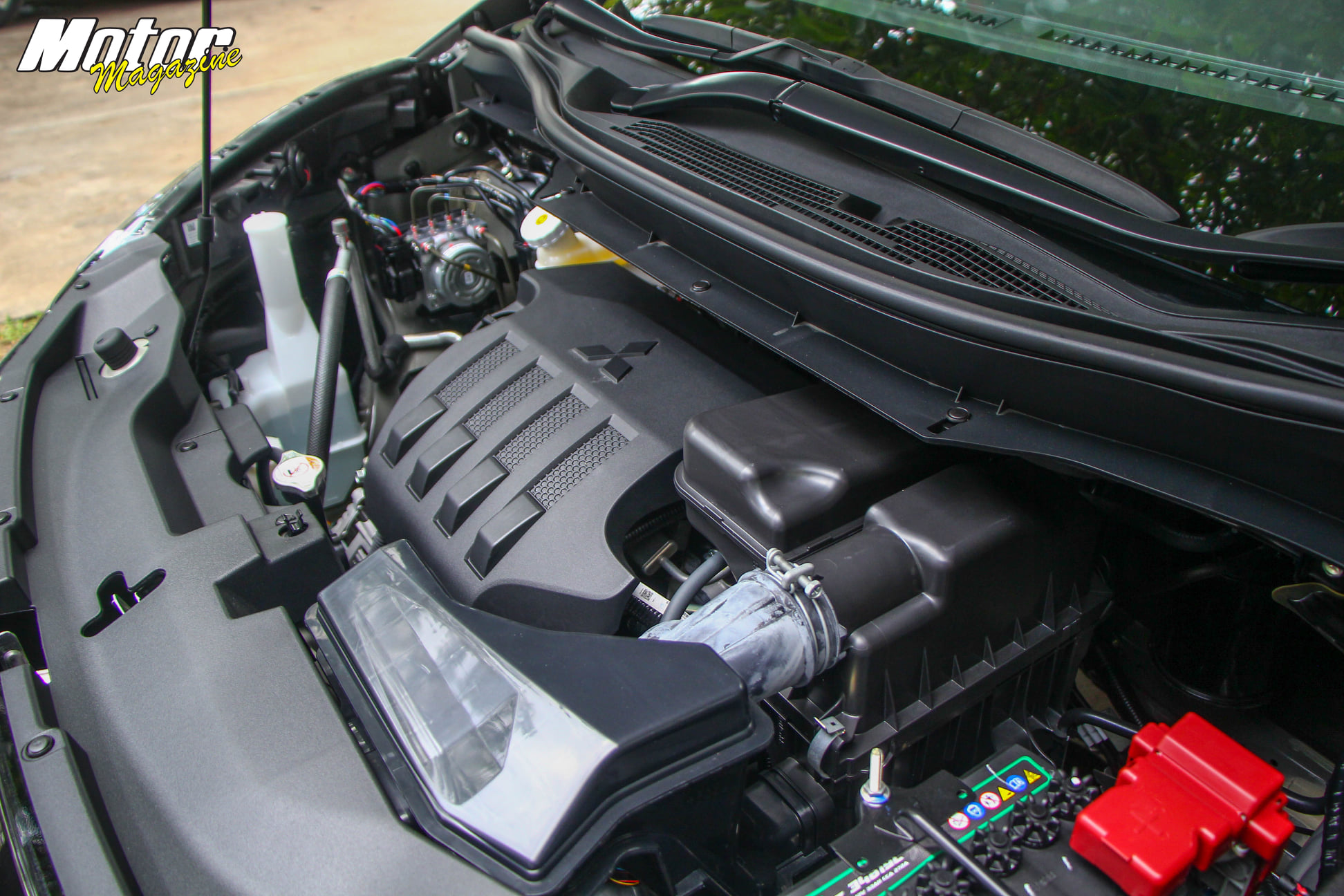
Mech & Tech
Mitsubishi’s venerable 4A91
engine that was also found in the last-generation Lancer does service here. The
1,499cc engine is a DOHC design with MIVEC variable valve timing and puts out
103bhp at 6,000rpm and 141Nm at 4,000rpm in this application. Slightly
de-tuned, as the Lancers were closer to 110bhp and 150Nm. Maybe to aid longevity.
The engine drives the front wheels through an archaic four-speed automatic.
Yes, the competitor Rush is the same formula (albeit rear-wheel-drive), and
there are still cars out there in 2020 with four-speed slushboxes but given
that Mitsubishi has a much better drivetrain on offer in the Eclipse Cross, I
could not help but wonder why that wasn’t sitting under the hood of the Xpander
Cross as well. Then again, the Xpander Cross hails from Indonesia while the
Eclipse Cross is from Japan, so different markets and specifications.
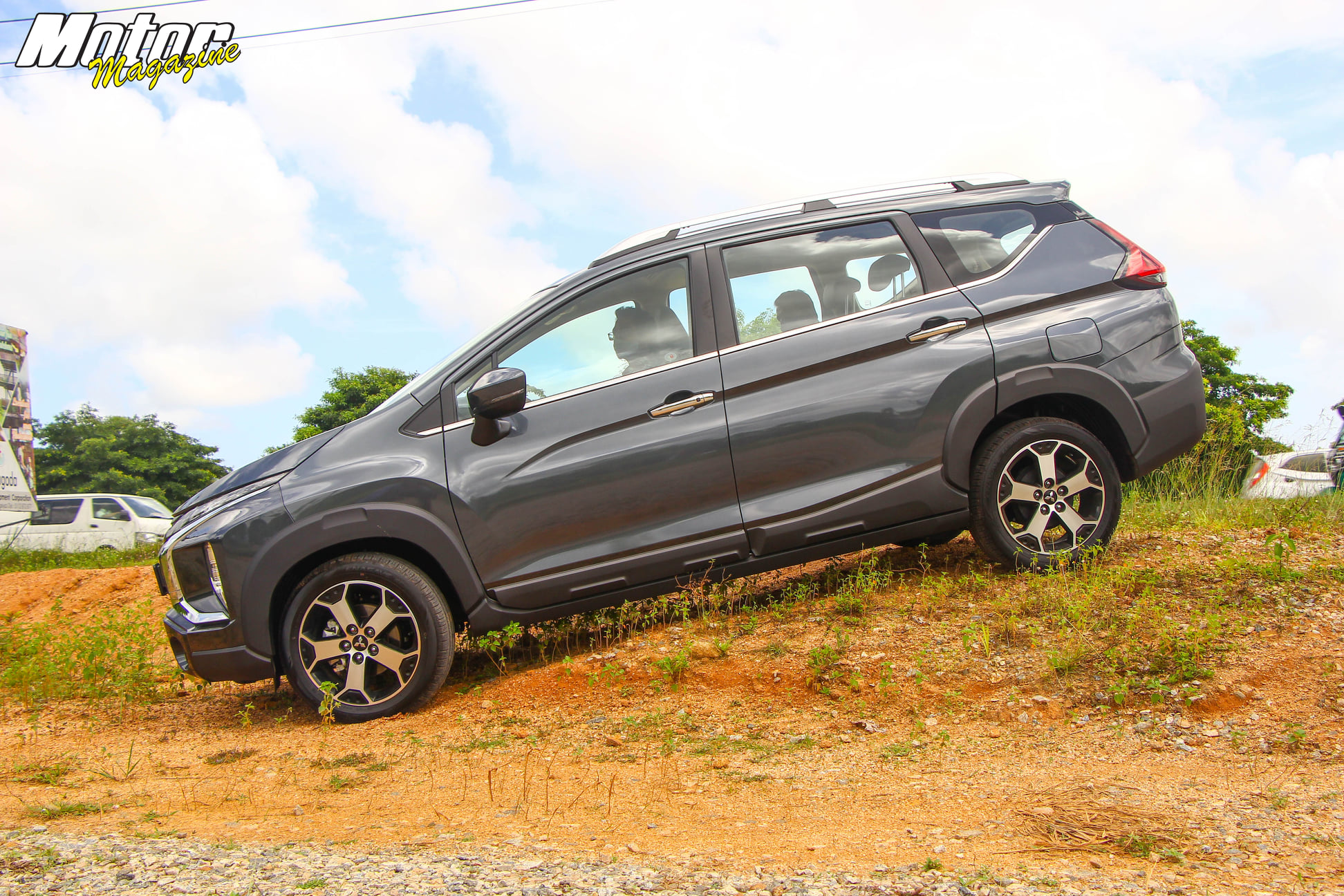
The steering is an electric rack as is common nowadays, front suspension is the MacPherson strut design while a torsion beam set-up takes care of the rear. As you’d expect, the Cross has higher ground clearance at 220mm (the standard Xpander is 205mm). Braking is done by a front-disc-rear-drum set-up and there’s ABS, EBD and traction control as well.

Driving Experience
The high ground clearance coupled
with an upright seating position means visibility is good all-round. The engine
is also silent enough and everything looks suitably 2020. The only hint is the
gear lever – instead of any trick manual modes, it’s a P-R-N-D-2-L affair. Slot
into D, release the handbrake and its like driving any automatic equipped car.
The Xpander Cross gets up to and maintains city speeds pretty well – the ratios
seem well selected for this purpose. It’s not afraid to downshift when
necessary and the engine gets a little vocal after 4,000rpm but you can make
nippy progress if you don’t look at the eco meter. It’s only when you reach
around 70km/h that the initial steam starts to run out – it can reach and
maintain 100km/h but don’t expect it to charge there, but take a little time.
Our testing was done with four adults on board and the power is sufficient for
the purpose – plan your overtakes and you will be fine. There’s cruise control
also, to give you peace of mind on the highway.
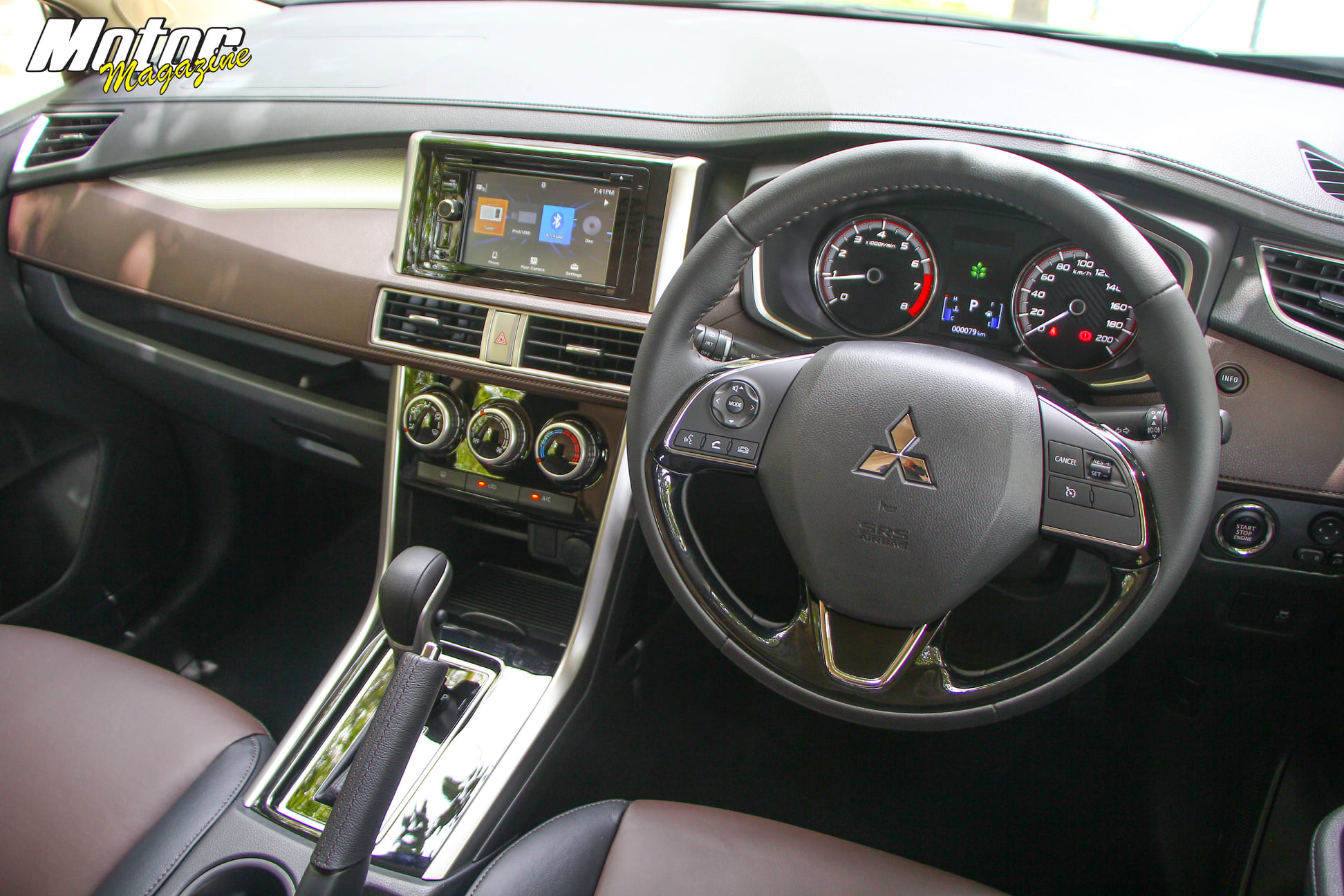
Handling is as you’d expect. The Xpander Cross copes with long sweeping corners at street legal speeds and your passengers won’t be shaken or stirred. Try and corner it enthusiastically and of course, the body will roll. So be aware of its limits and drive accordingly. A smooth driving style is best here. Ditto braking, where brake power is more than enough for the usage scenario. A stint as a passenger in the second row revealed a comfortable ride, remarkably low noise (engine, wind and tyre) and minimal ‘jostling’ in the stop-go nature of traffic. Mitsubishi say in their press materials that they’ve added noise insulation and sound deadening to the cabin of the Xpander Cross.
The instrument cluser is an analog affair for revs and speed, flanking a digital screen that shows fuel level, engine temperature, trip info, fuel consumption, eco status and service reminders. However, the ‘INFO’ button to operate this is on the right-hand side of the dashboard and it’s the only way to cycle modes. I found the reverse camera display on the infotainment stack is very dim and almost invisible in bright sunlight. We searched through the menus for a brightness control but were unable to find it.
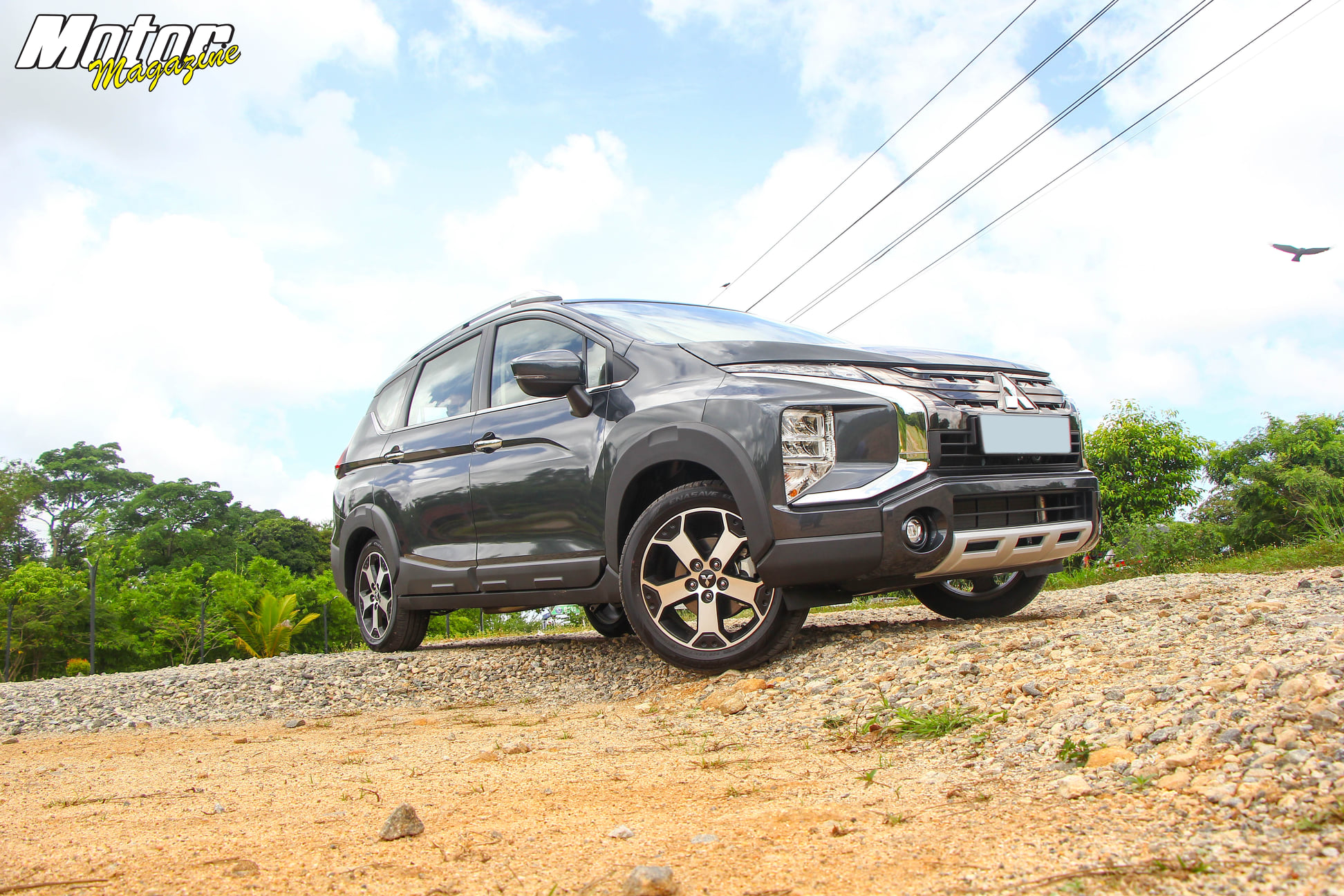
Living with the Xpander Cross
This is where the vehicle shines
in terms of sheer practicality. I was easily able to sit behind my own driving
position, and even comfortably in the third row, aided by sliding second-row
seats. The second and third rows flip down (second row is a 40-60 affair and
third row is a 50-50 affair). The centre seatback of the second row can also
flip down independently and form an armrest! Versatile indeed. There’s a tray under
the front passenger seat to stow your shoes, an organiser tray in the boot and
even with all seven seats up, you can fit some squishy bags in the boot. Fold
the third row down and it’s a spacious affair that can easily deal with several
full-sized suitcases.
The second and third rows are kept cool by a roof-mounted air blower similar to the one we encountered in the L200. The blower sucks in some cool air from the front of the vehicle and blows it towards the rear. It worked well during our test under hot sunshine and was aided by the superb AC – despite being a manual AC system, it kept us properly chilled and I had to turn it down occasionally. There are plenty of cup holders, storage boxes, seat back pockets and other nooks and crannies for storage. However, I didn’t encounter any USB charging ports – just two 12v power sockets. This is a positive as you can use a charging adaptor of your choice – so if you want a Qualcomm Quick Charge capable one for example, just get the appropriate adaptor. The infotainment system is a 2-DIN touchscreen system that at cursory glance may seem like an aftermarket unit. However, when you properly look, the smooth lines, seamless integration with the surrounding trim and general quality of fit and finish reveal that its indeed a factory-fitted unit. It also offers the benefit of being a standard size so if you want to upgrade, go right ahead. It offers Radio, CD/DVD, USB, AUX and Bluetooth integration and plays through six speakers (one in each of the four doors, plus one in each A-pillar trim). The sound quality is good enough for the purpose with a punchy tone to it that will thrill bass lovers. The presence of the CD player is good as well, as it’s still a well-used medium in this part of the world.
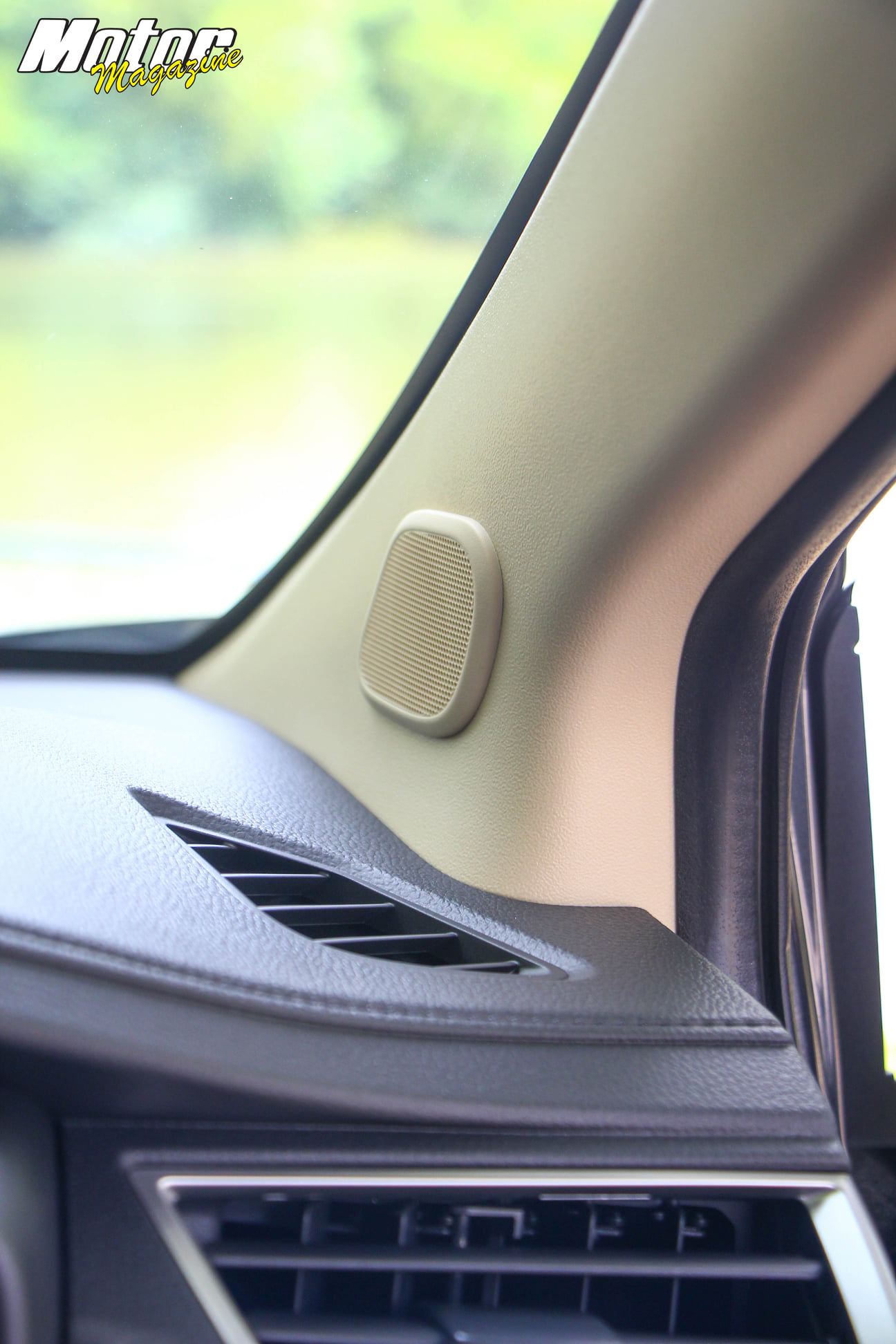
Overall fit and finish is decent, with things working as they should, no creaks, rattles or awkward fitments and the lighter-coloured trim in the upper half of the cabin contributed towards an airy feel.
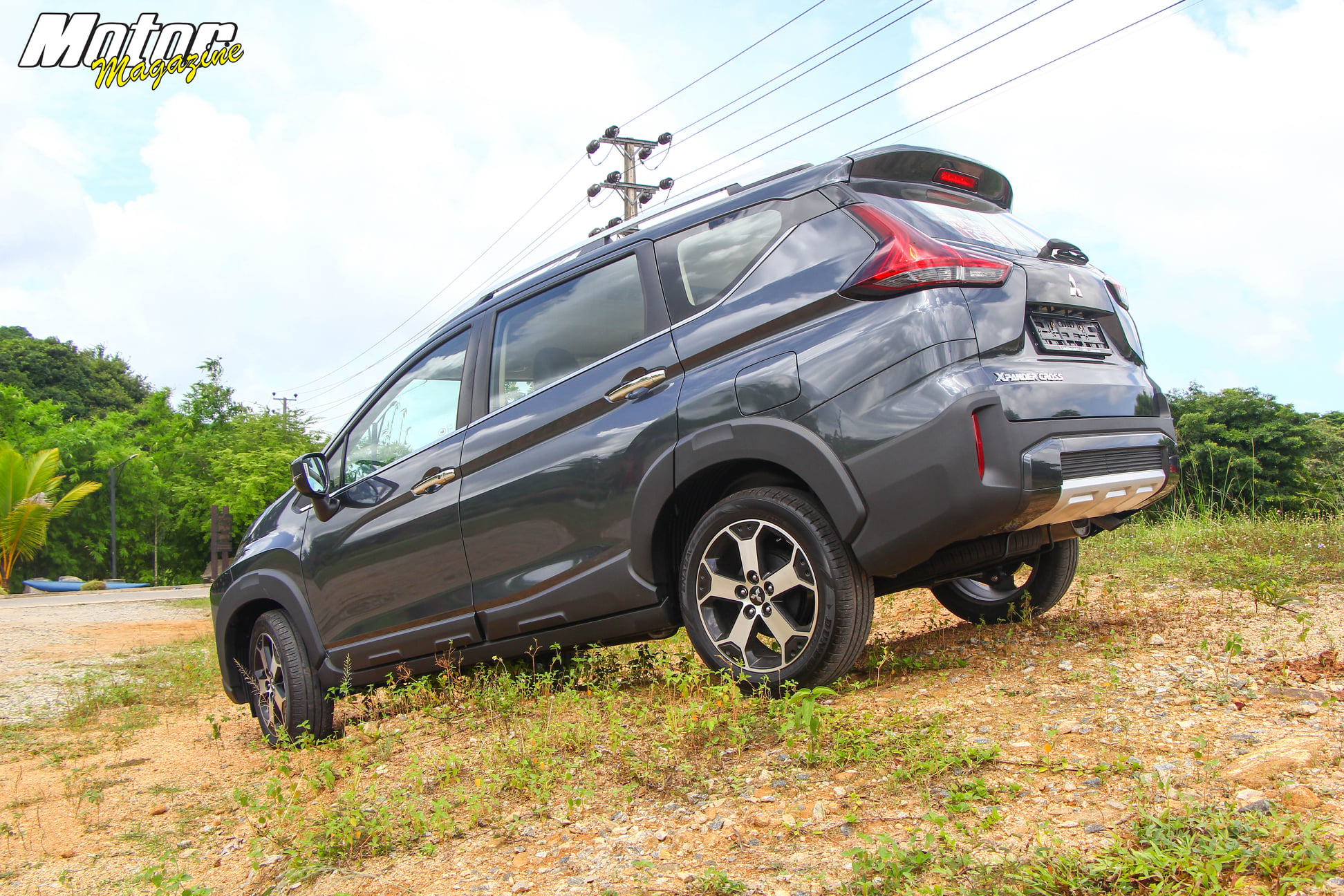
Safety
The Xpander Cross comes with ABS,
EBD, traction control, hill start assist, central locking with keyless entry,
alarm system with immobiliser and UV cut glass. However, the elephant in the
room is that it only has two airbags – driver and front passenger. With
vehicles coming with at least six airbags nowadays, it would be good if
Mitsubishi can look into a curtain airbag system to re-assure passengers in the
second and third rows. All seats have three-point seatbelts though, and there
are ISOFIX mountings in the second row for two child seats.
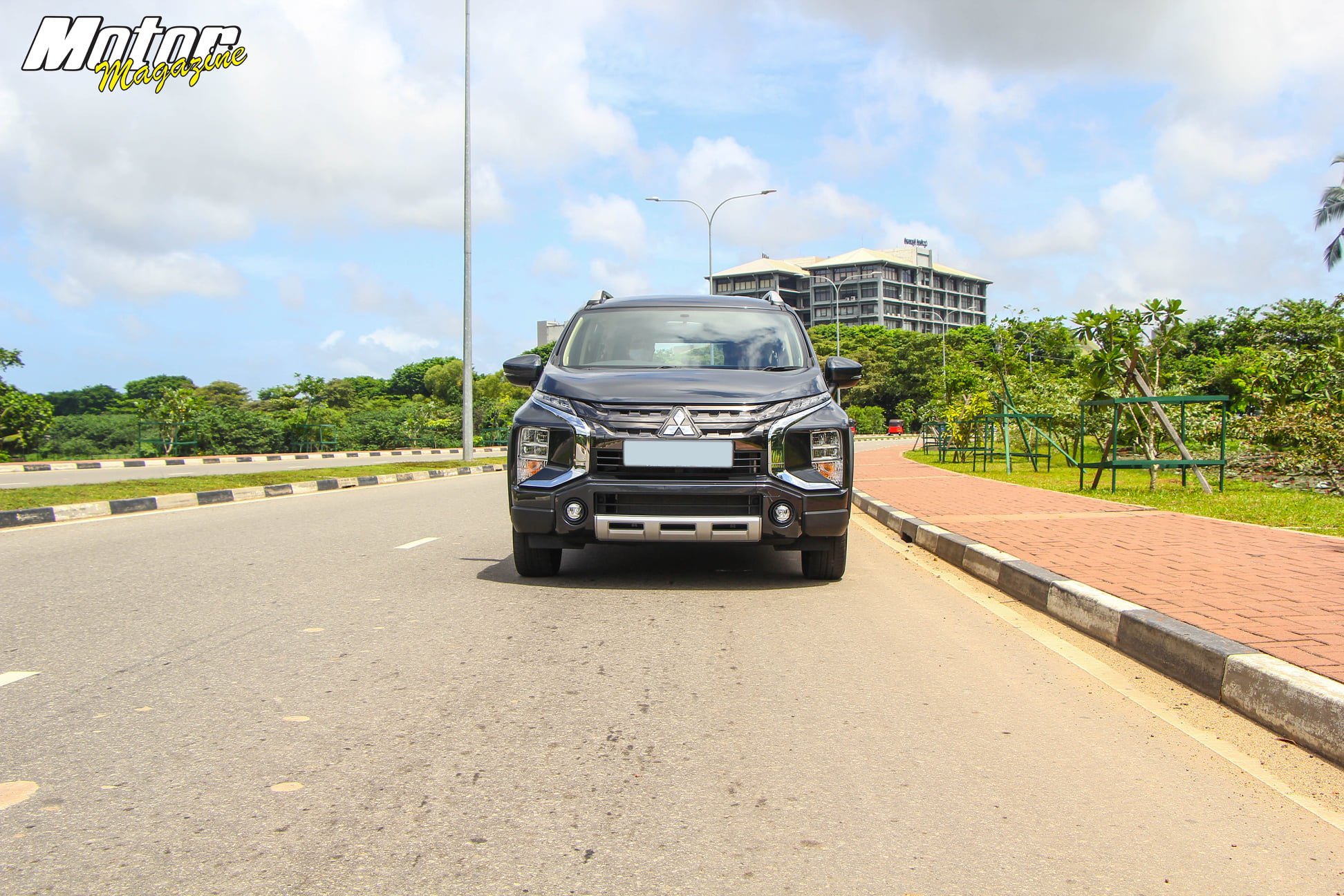
Fuel Econ & Price
Navod from United Motors tells me
that the 4A91-and-auto-box combo grants the Xpander Cross a very good fuel
economy of around 9-10km/l in Colombo and 14-15km/l on the highway. Indeed,
during our tests, I saw figures of around 13 litres per 100km on the info
display – that works out to 7.7km/l. Mind you, I was not driving in any
economical sense at all, so that’s a pretty decent showing for a 1,200kg
vehicle, and a relatively un-aerodynamic MPV at that. United Motors offer an
estimated price of 8.59 million which is the permit price but includes the cost
of the permit, and they will source the permit for you. The non-permit price is
9.5 million. All prices were correct at the time of testing.
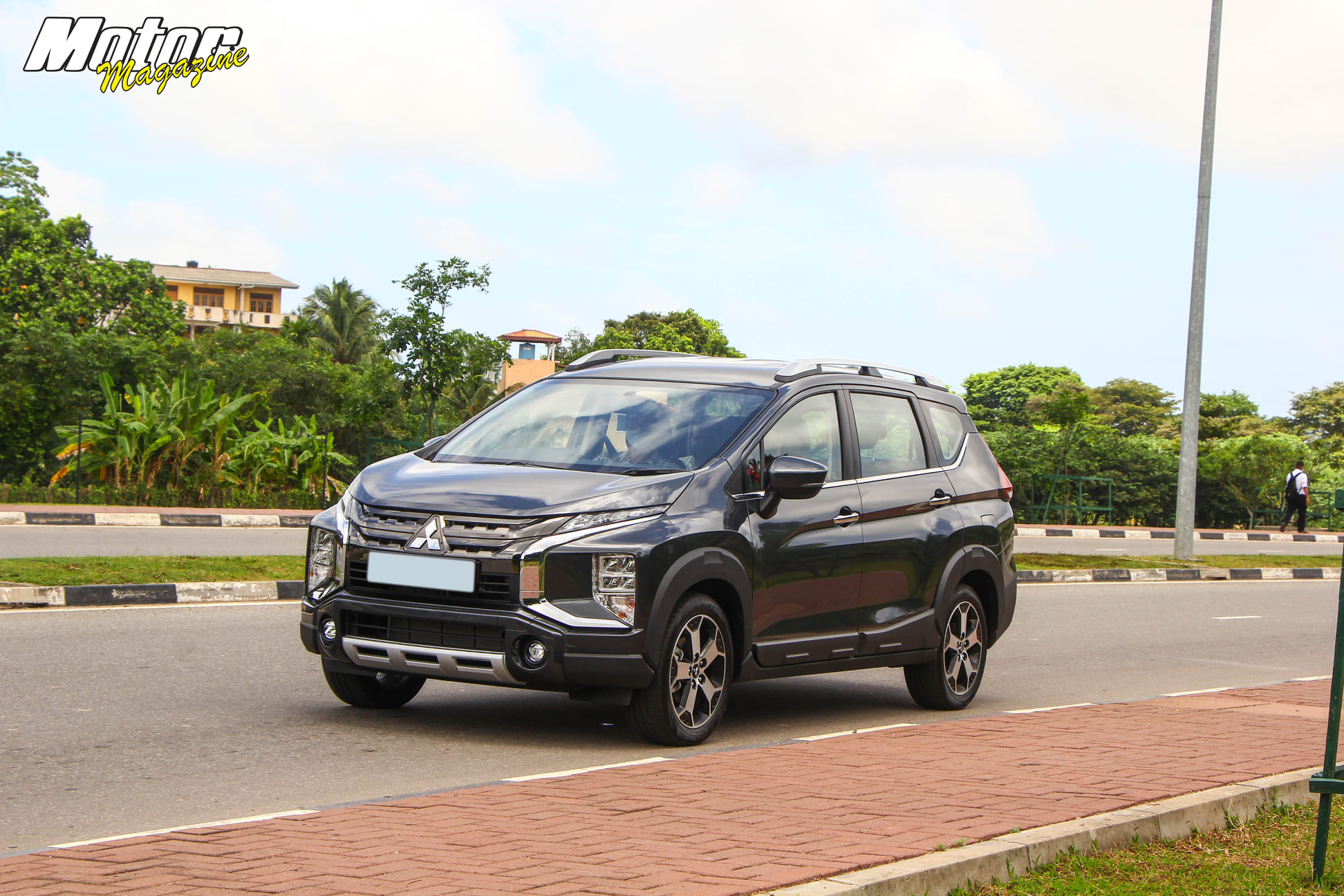
Final Words
With the Xpander Cross,
Mitsubishi have found a vehicle to one-up the Toyota Rush. The regular Xpander
is a direct competitor to the Rush (or the Avanza before that) and thus had to
compete not only with the vehicle itself, but also against the god-like brand
image of Toyota in our country. With the Cross, the increased ground clearance,
extra features and tougher outlook are a compelling reason for one to consider
it. In fact, the Xpander Cross would make a good vehicle for tourism, carrying
guests and their luggage on the unpaved, pot-holed roads that lead to top-class
hotels in the rural areas of the country. So, check it out at United Motors’
showroom in Colombo if it fits your bill.




